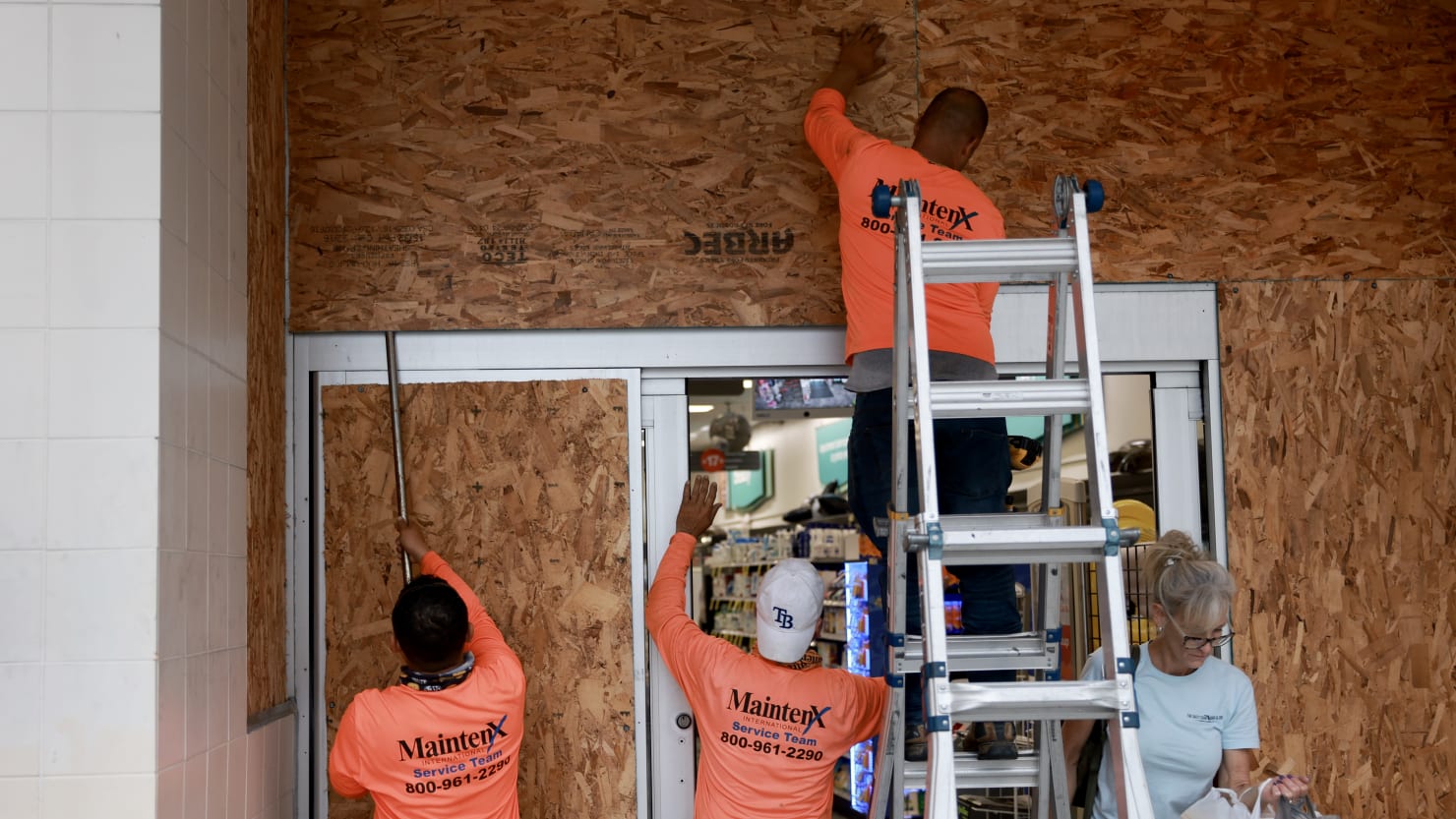Hurricane Helene could be “catastrophic” to Floridians on Thursday as winds reaching 156 miles per hour forces U.S. schools to shut and could lead to billions of dollars in damage.
The National Hurricane Center officers are saying that over 40 million people in Florida, Georgia and several other U.S. states are under threat as forecasters predict it will be a Category 4 storm—the second highest category.
It is likely to hit large parts of Florida on Thursday, entering through the Big Bend area on the northwestern coast of Florida.
Storm surges caused by the hurricane could also rise to a gigantic 20 feet, with those along the coast of Northeastern Florida being put on high alert.
“There is a danger of catastrophic and unsurvivable storm surge for Apalachee Bay,” the National Weather Service said. “Storm surge may begin to arrive as early as late Wednesday night ahead of the winds. This forecast, if realized, is a nightmare surge scenario for Apalachee Bay. Please, please, please take any evacuation orders seriously!”
Jamie Rhome, a deputy director at the National Hurricane center, said most lives are typically lost from flash flooding caused by torrential rain, Reuters reported.
Emergency resources are being prepared for rescue operations, police in Tampa said.
Airports in St. Petersburg, Tallahassee and Tampa are set to close on Thursday, while people in Pinellas, Sarasota, Charlotte and Hillsborough have been rapidly evacuated from dozens of hospitals, nursing homes, assisted living centers and other residential areas.
The storm devastated the Gulf of Mexico on Wednesday. It was moving north at high speeds on Wednesday and it could travel hundreds of miles further into other U.S. states by the end of Thursday, triggering warnings in Georgia and as far as Alabama and North Carolina.
The governors of Florida, Georgia, South Carolina, North Carolina and Virginia have declared a state of emergency as up to 12 inches of rain could be dumped on various parts of the Southeastern U.S.
Landslides are also expected to ravage hilly regions.
The majority of Georgia’s public schools and universities have announced closures, including Fulton County, while Broward County Public Schools, the second largest school district in Florida, said their facilities would close ahead of the storm’s arrival.
Miami-Dade County Public Schools will remain open, the district said on Wednesday night, but all outdoor activities are set to take place indoors “in an abundance of caution.”
Meanwhile in Orlando, Walt Disney World said it would only close its Typhoon Lagoon water park and golf courses.
Some residents were seen boarding up their homes. Others told the Associated Press they were taking higher ground to avoid the worst outcomes.
“People are taking heed and hightailing it out of there for higher ground,” Kristin Korinko, a Tallahassee resident, said.
The insurance firm Gallagher Re are expecting billions of dollars in damage, the Associated Press also reported.
“I think we’re going to see some significant power outages, probably nothing like we’ve seen, because it’s 159 counties wide,” James Stallings, director of the Georgia Emergency Management and Homeland Security Agency, said.
People could go a week without any power, Florida’s emergency said. Some 18,000 linemen are being deployed to stop power cuts.
Floridians who may claim to have experience of defending themselves against wild storms were specifically warned by a coordinator for the National Hurricane Center: “Please do not compare it to other storms you may have experienced over the past year or two.”
Hurricane Michael in 2018, the first Category 5 hurricane to come to the Florida Panhandle, killed at least 74 people and caused an estimated $25.1 billion in damages.




![Tyson Foods Plant [Photo: Food Manufacturing]](https://southarkansassun.com/wp-content/uploads/2023/08/iStock_1185520857__1_.5e441daa51cca-600x337.jpg)







![Silverado Senior Living Management Inc. [Photo: Los Angeles Times]](https://southarkansassun.com/wp-content/uploads/2023/10/download-6-4-600x337.jpg)

![China's Wuhan Institute of Virology [Photo: Nature]](https://southarkansassun.com/wp-content/uploads/2023/09/d41586-021-01529-3_19239608-600x337.jpg)
















